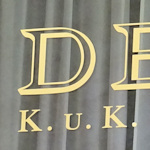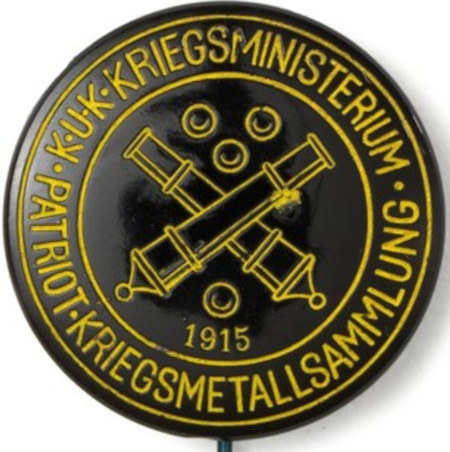
Just to finish off our series on Habsburg terms for visitors to Vienna, a little delve into the complicated world of two abbreviations that appear intriguingly on signs and labels all over the city: k. k. and k. u. k.
- See also:
- Previous: Empresses and archdukes?
- Next: back to the Habsburg overview
K is for…?
The Habsburgs liked their Ks, because the German words for Emperor, Empress, King, Queen, and their derivatives all begin with that letter. For example: Emperor is Kaiser, imperial is kaiserlich, Queen is Königin, and royal is königlich.
k. k.

(The visiting card of “Johann Schmid k.k. Gend. Postenführer”, who was commander of a police station, 1830–1850; Wien Museum Inv.-Nr. 146929; excerpt reproduced with permission under the terms of the CC0 licence)
k. k. stands for kaiserlich-königlich (English: imperial-royal).
This abbreviation was used for state affiliations in the Austrian Empire (1804 – 1867) and later for those in the Austrian half of the successor Austro-Hungarian empire (1867 – 1918).
So a plate made in 1810 and marked k. k. was, essentially, the property of the crown, i.e. the emperor. In that same year, the k. k. Finanzministerium was the Imperial Ministry of Finance and a k. k. Feldmarschall-Lieutnant was a Lieutenant Field Marschall in the Imperial armed forces.
k. u. k.

(1915 pin for “patriotic collection of metal for the war effort” produced for the k.u.k. Kriegsministerium; Wien Museum Inv.-Nr. 39557; excerpt reproduced under the terms of the CC BY 4.0 license; photo by Birgit and Peter Kainz)
k. u. k. stands for kaiserlich und königlich (English: imperial and royal)
This abbreviation was used in the Austro-Hungarian empire to refer to empire-wide state affiliations.
So the k.u.k. Kriegsministerium in 1911 was the Ministry of War in the Austro-Hungarian empire, defence being one of the things over which the semi-autonomous Hungarians did not have control.
A k. u. k. Hoflieferant was a supplier to the imperial court with an official warrant of royal approval. Such companies or individuals were allowed to highlight this affiliation in their promotional material, much like the “By appointment to Her Majesty the Queen” you used to see with some British businesses.

(This present-day sign hints at an imperial connection)
You still find places in today’s Vienna using this designation for marketing purposes.
Demel, a famous cake and confectionery shop in Vienna’s center, was founded in 1786. The sign outside its premises on Kohlmarkt still says “K. u. K. Hofzuckerbäcker” (which translates roughly as “By Appointment to the Imperial Court, Suppliers of Confectionery Products”).
Not so similar after all
Although the two abbreviations look and sound the same, they’re altogether quite different.
The second k (royal) in k. k. refers to the various kingships held by the Austrian Emperor. In k. u. k. that second k refers specifically to the Kingdom of Hungary.
However, just to confuse us, not everyone always stuck to the right terminology. So, if in doubt, just assume any “k” refers to something monarchical!